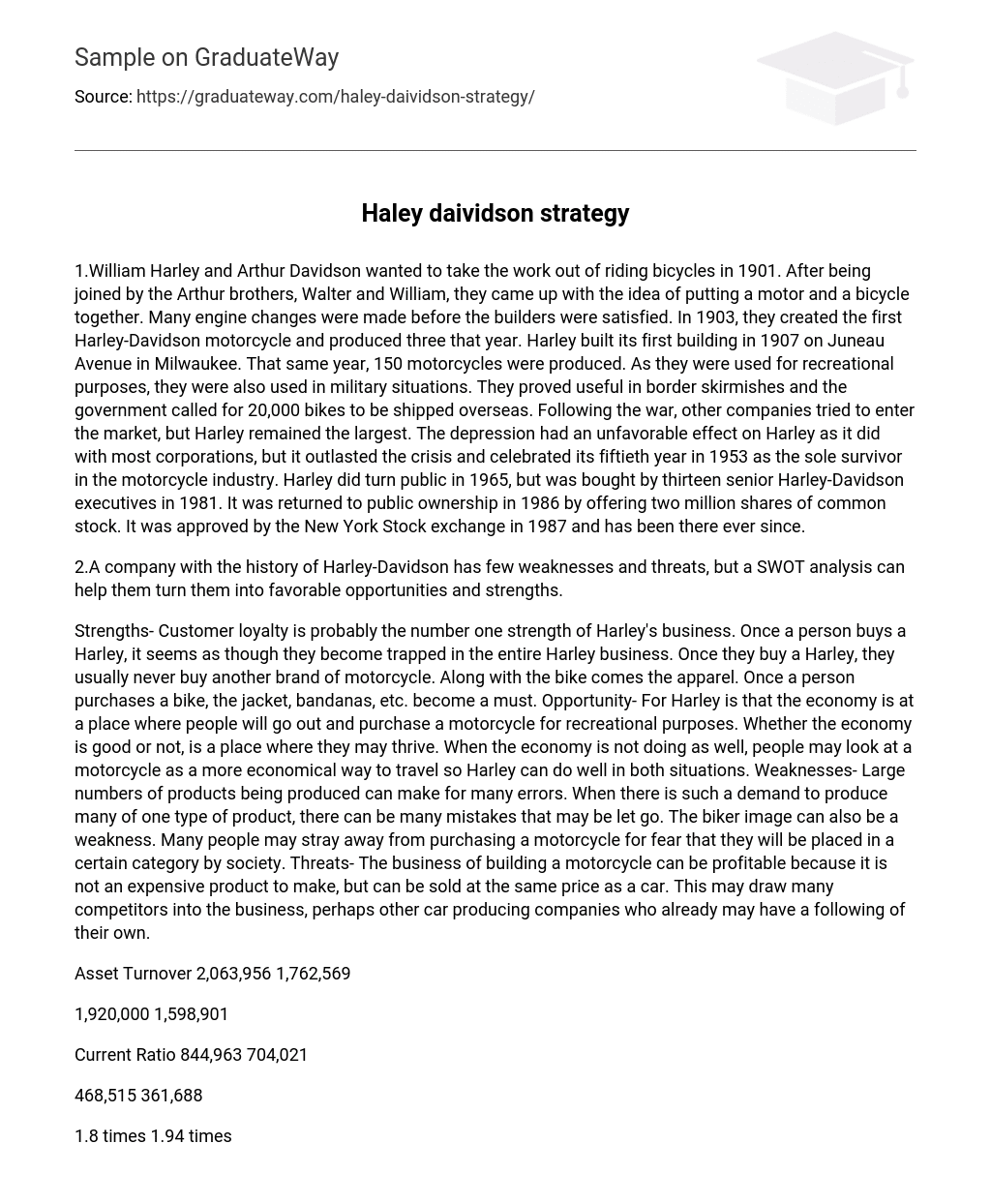William Harley and Arthur Davidson, along with the Arthur brothers Walter and William, sought to combine a motor and bicycle in 1901 for easier riding. Through multiple engine modifications, they ultimately created the first Harley-Davidson motorcycle in 1903. By year-end, three motorcycles had been produced. In 1907, Harley constructed its initial building on Juneau Avenue in Milwaukee and manufactured 150 motorcycles that served both recreational and military purposes. The government even requested 20,000 bikes for overseas deployment during border conflicts. Despite competition post-war, Harley remained the industry’s largest entity. Though impacted by the Great Depression, the company persevered and celebrated its fiftieth anniversary in 1953 as the sole motorcycle manufacturer to endure. In 1965, Harley became publicly traded but was later acquired by thirteen senior executives in 1981 before returning to public ownership through a two million share issuance of common stock in 1986. It received approval from the New York Stock Exchange in 1987 where it has since remained.
A SWOT analysis can assist a company like Harley-Davidson in transforming its weaknesses and threats into favorable opportunities and strengths.
Harley’s business strength lies in its customer loyalty. Once someone purchases a Harley motorcycle, they tend to remain loyal to the brand and do not buy from other motorcycle brands. They also tend to buy associated apparel such as jackets and bandanas. An opportunity for Harley is that people are willing to purchase motorcycles for recreational purposes, regardless of the state of the economy. Whether the economy is good or bad, Harley can thrive. However, producing a large number of products can lead to errors. The demand for a particular product may result in mistakes being overlooked. The biker image associated with Harley can also be a weakness as some people might avoid purchasing a motorcycle due to societal categorization concerns. The business of building motorcycles can be profitable as they are not expensive to make but can be sold at car prices. This may attract competitors, including car companies with existing followers.
The favorable aspect of Asset Turnover is that it indicates that Harley is making more than the amount of money they invest in their company. Similarly, Current Ratio indicates that Harley can easily repay their short-term debts without any difficulties. This is considered favorable. Additionally, the favorable aspect of Total debt to total asset is that Harley manages to keep this figure below 50%, unlike many other companies who have higher levels of debt compared to their assets, as loans often contribute to their assets.
To overcome the negative perception linked to the biker image and utilize Harley’s rich history, one option is for the company to engage in charitable initiatives and community service. This involvement can involve both employees and loyal customers who can dedicate their time to enhancing Harley’s reputation. To motivate customer involvement, the company could provide small rewards like merchandise, helmets, or discounts. By encouraging these bikers to unite in efforts aimed at improving the local area, Harley may be able to transform its image.
Harley-Davidson may consider diversifying its product offerings to gain a competitive advantage. Opportunities in other performance-driven industries, such as bicycles, roller blades, and skateboards, are not beyond the company’s capabilities. By targeting Generation X and Y, who have shown interest in extreme sports, Harley-Davidson can foster long-term relationships with these demographics. These performance-oriented products align with the company’s reputation for edginess and innovation.
The surge in Harley’s stock is attributed to the perception that the Japanese dominate the industry. Since the start of this year, their stock has risen by approximately 49% due to operational improvements. Previously, customers experienced lengthy wait times due to high demand, but these problems have been resolved and motorcycles are now being produced at an unprecedented rate. This article also highlights positive relations with employees and unions at Harley. Despite having one more year remaining on their previous agreement, they recently signed a seven-year contract. However, critics liken Harley to a “balloon waiting to burst” and view it as a risky investment. They argue that the high price allows for limited future growth and predict a decline in stock price.





